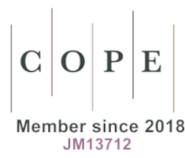Yuan Versus United States Dollar: the Defective Bipolar China–United States Relationship
DOI:
https://doi.org/10.18778/1641-4233.22.08Keywords:
globalisation, power, financial markets, currency regimesAbstract
The chosen currency regime places a state within the international economic order. Therefore, the exchange rate is a key to creating an internal financial system and opening it up to foreign participants. In this paper we would like to show the differences between China and the USA and examine their impact on potential changes on the distribution of power in the international system. We will also try to prove that this field is a missing link in preventing the final launching of a symmetrical bipolar system which will finally force China to accept the rules of a Washington Consensus instead of following its own patterns. The case study method will be used in order to compare market data and assess the role of currencies for the given model.
Downloads
References
Annual Report on Exchange Arrangements and Exchange Restriction 2014, International Monetary Fund. Web. 3 May 2016, http://www.imf.org.external/pubs/nft/2014/areaers/ar2014.pdf
Google Scholar
Export of goods and servicies (BoP, current $), World Bank Data. Web. 3 May 2016, http://data.worldbank.org/indicator/BX.GSR.GNFS.CD
Google Scholar
GDP per cappita (current $)”, World Bank Data. Web. 3 March 2016, http//data.worldbank.org/indicator/NY.GDP.PCAP.CD?page=6
Google Scholar
Hong Kong. The Global Offshore Renminbii Bussiness Hub, Hong Kong Monetary Autority. Web. 29 May 2016, http://www.hkma.gov.hk…./rmb-bussines…hong-kong/hkma-rmb-book
Google Scholar
IMF and Emergin Markets. Five Fat Years: Recovery from the Debt Crises, 1990–1994, International Monetary Fund. Web. 29 May 2016, http://www.imf.org/externalpubs/ft/history/2012/pdf/c9/pdf
Google Scholar
Import, World Bank Data. Web. 3 May 2016, http://data.worldbank.org/indicator/BM.GSR.GNFS.CD
Google Scholar
New restriction from Beijing boost Chinese stocks, China Daily/Reuters, August 4, 2015. Web. 30 May 2016, http://www.rt.com/bussiness/311540-restrictions-from-beijing-boost/
Google Scholar
Special Drawing Rights (SDR), IMF Factsheet. Web. 3 May 2016. http://www.imf.org/external/np/exr/facts/sdr.htm
Google Scholar
What is the AIIB?, The Asian Infrastructure Bank. Web. 31 May 2016, http://www.euweb.aiib.org
Google Scholar
Bin, Zhang. An international comparison of exchnge-rate policy in countries that have undergone economic transition. China’s Exchange Rate Regime, China Developement Reaserch Fundation. New York: Routledge, 2015.
Google Scholar
Duttagupta, Rupa, Fernandez, Gilda and Karacadag, Cem. From Fixed to Float: Operational Aspects of Moving Toward Exchange rate Fexibility, “IMF Working Paper”, July 2004. Web. 1 July 2016, https://www.imf.org/external/pubs/ft/wp/2004/wp04126.pdf
Google Scholar
DOI: https://doi.org/10.5089/9781451854930.001
Eichengreen Barry. Sterling’s Past, Dollar’s Future: Historical Perspectives on Reserve Currency Competition, “NBER Working Paper”, no. 11336, May 2005. Web. 28 January 2017.
Google Scholar
Eichengreen, Barry, Chitu, Livia, Mehl, Arnould. Stability or upheaval? The currency composition of international reserves in the long run, “ECB Warking Paper Series”, no. 1715, August 2014. Web. 28 January 2017, http://www.ecb.europa.eu/pub/pdf/scpwps/ecbwp1715.pdf?485e29e6bbcff9684dfb4cc545b2aefc
Google Scholar
Frieden, Jeffrey A. Currency Politicks. The Political Economy of Exchange Rate Policy. Prinecton: Princton University Press, 2015.
Google Scholar
DOI: https://doi.org/10.1515/9781400865345
Funke, Michael, Shu, Chang, Cheng. Xiaogiang and Eraslan, Sercan. Assesing the CNH-CNY pricing differential: role of fundamentals, contagion and policy, “BIS Working Paper”, February 2015. Web. 28 May 2016, http://www.bis.org/publ/work492.htm
Google Scholar
Ghazanchyan, Manuk, Stotsky, Janet G. and Zhang, Qiangian. A New look at the Determinants of Growth in Asian Countries. “IMF Working Paper”, August 2015. Web. 30 May 2016, http://www.imf.org/external/pubs/ft/wp/2015/wp15195.pdf
Google Scholar
Ghosh, Atish R., Gulde Anne-Marie, Wolf, Holger C. Exchange Rate Regime. Choices and Consequences. Cambridge: The MIT Press, 2003.
Google Scholar
DOI: https://doi.org/10.7551/mitpress/2898.001.0001
Haliżak, Edward. Ideowe problemy globalnego ładu liberalnego w gospodarce światowej – rola i znaczenie Washington Consensus, [in:] Globalizacja, a stosunki międzynarodowe. Eds. E. Haliżak, R. Kuźniar, J. Symonides. Bydgoszcz, Warszawa: Oficyna Wydawnicza Brandta, 2004.
Google Scholar
Halper, Stefan. The Bejijing Consensus. Legitimazing Authoritarianis in our Time. New York: Basic Books, 2012.
Google Scholar
Hughes, Jennifer, Wildau, Gabriel. China to extend temporary share-sale ban to calm the markets, “Financial Times”, January 6, 2016. Web. XXX, http://www.ft.com/intl/cms/s/0/150fc4aa-b426–11e5-aad2–3e9865bc6644.html#axzz4AKJZrAaI
Google Scholar
I-Cing. Księga Przemian. Warszawa: Latawiec, 1995.
Google Scholar
Jiantuo, Yi. Summery of the reaserch results, [in:] China’s Exchange Rate Regime, China Developement Reaserch Fundation. New York: Routledge, 2015.
Google Scholar
Kawai, Masahiro, Takagi, Shinji. A proposal for exchange rate policy coordination in East Easia. Eds. M. Kawai, P.J. Morgan, S. Takagi. Cheltenham, Northampton: Asia Developement Bank Insitute, Edward Elgar Publishing, 2012.
Google Scholar
Rachman, G. Xi has changed China’s winning formula. “Financial Times”, 31 May 2016.
Google Scholar
Runde, Daniel F., Savoy, Conor M. and Rice, Charles F. Global Infrastructure Developement. A Strategic Approach to U.S. Ledership. Center for Strategic and International Studies, March 2016. Web. 7 May 2016, http://www.csis.org/analysis/global-infrastructure-development
Google Scholar
Runde, Daniel F., Moser, Helen and Nealer, Erin. Barriers to Bankable Infrastructure. Incentivizing Private Investment to Fill the Global Infrastructure Gap”. Center for Strategic and International Studies, April 2016. Web. 7 May 2016, https://www.csis.org/analysis/barriers-bankable-infrastructure
Google Scholar
Triennial Central Bank Survey. Foreign exchange turnover in April 2016, Bank for International Settlements, September 2016. Web. 29 January 2017, http://www.bis.org/publ/rpfx16fx.pdf
Google Scholar
Wildau, Gabriel, Sanderson, Henry, Hornby, Lucy, Mitchell, Tom. China limits gold imports and renminbi outflows, “Financial Times”, December 1, 2016, Web. 11 February 2017, www.ft.com.content/cc6b5622-b79b-11e6-ba85–95d1533d9a62
Google Scholar
Williamson, John. A short history of the Washington Consensus, [in:] The Washington Consensus Reconsider. Towards a New Global Governence, Eds. Oxford, New York: Oxford University Press, 2008.
Google Scholar
Yao, Yang. The End of Beijin Consensus. Can China’s Model of Authoritarian Growth Survive?, “Foreign Affairs”, February 2010. Web. 30 May 2016, http://www.foreignaffairs.com/articles/china/2010–02–02/end-beijing-consensus
Google Scholar
Zemin, Jiang. Full text of Jiang Zemin’s Report at 16thParty Congress, China Internet Information Center, 2002. Web. 20 May 2016, http://www.china.org.cn/english/features/49007.htm
Google Scholar
Downloads
Published
How to Cite
Issue
Section
License
Copyright (c) 2018 International Studies. Interdisciplinary Political and Cultural Journal

This work is licensed under a Creative Commons Attribution-NonCommercial-NoDerivatives 4.0 International License.

















